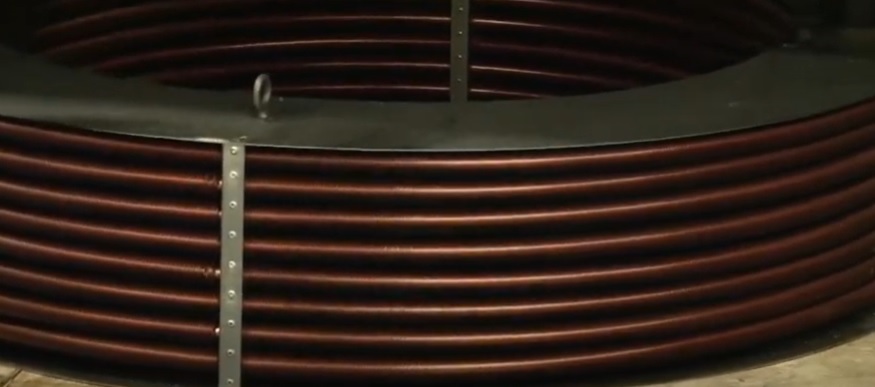Pushing the Envelope with Plastic
Steve Druley, Marketing Manager, UFE Inc.
 We were delighted to see the plastic gear set pictured on the cover of your March/April issue. UFE played the lead role in its design and manufacture. It is indeed a geartrain worth showcasing, and even more so when the largest gears—the 18" internal bevel ring gears—are added to complete the system. This system was integral to the design of a new clothes washing machine bringing many attractive features to the market.
We were delighted to see the plastic gear set pictured on the cover of your March/April issue. UFE played the lead role in its design and manufacture. It is indeed a geartrain worth showcasing, and even more so when the largest gears—the 18" internal bevel ring gears—are added to complete the system. This system was integral to the design of a new clothes washing machine bringing many attractive features to the market.
The system was conceived from the start with plastic gears because of the advantages of plastic in the application—especially cost, noise, and weight. UFE was awarded the project, from gear design an-alysis to mold manufacture and part molding for all the molded parts pictured.
So, of course, we are proud to submit for your readers a photo of the completed gear assembly, including the largest gears in the system. As your articles in the March/April issue discussed, plastic gear design and production requires experience and resourcefulness to be delivered within the allowable time and budget. While plastic gears have long been used in products of all kinds, and their employment is growing, the need for combining the art and science of injection molding increases exponentially as the size of the gear grows. This gear set is an excellent case-in-point of plastic gearing potential--and challenges.

The large bevel ring gears presented challenges in gear design, mold design and moldability. From a gear design standpoint, little has been published regarding the design of an internal bevel ring gear (whether made from metal or plastic). As a result, the desired mesh and tooth profile required gear design resourcefulness, including collaboration with a gear cutting machine manufacturer--The Gleason Works--who ultimately provided the basic tooth form unique to internal bevel gears. This led UFE to the development of an optimized gear tooth form for the application. The next challenge was the design and development of the mold.
 The material used in all the gears was a glass-filled resin specified for its strength, resistance to water absorption and compatibility with chemicals. In the final analysis, the most notable production challenges were borne out of the molding properties of the glass-filled resins. Specifically, the uniform alignment of the fibers in glass-filled resins results in non-uniform shrinkage in the molded gears, potentially producing several gear defects. This required UFE to redevelop the original tooth profiles for each gear. But that’s not all. Each tooth in each gear then required modification from the original design. In addition, to maintain roundness and optimum part strength, several gating schemes in the mold design were evaluated with Moldflow analysis. Each gear profile in the gear train was revised, and the gating and runner system were optimized in mold design specifically for the resin.
The material used in all the gears was a glass-filled resin specified for its strength, resistance to water absorption and compatibility with chemicals. In the final analysis, the most notable production challenges were borne out of the molding properties of the glass-filled resins. Specifically, the uniform alignment of the fibers in glass-filled resins results in non-uniform shrinkage in the molded gears, potentially producing several gear defects. This required UFE to redevelop the original tooth profiles for each gear. But that’s not all. Each tooth in each gear then required modification from the original design. In addition, to maintain roundness and optimum part strength, several gating schemes in the mold design were evaluated with Moldflow analysis. Each gear profile in the gear train was revised, and the gating and runner system were optimized in mold design specifically for the resin.
Gears present unique challenges for injection molders. Thanks to many ongoing advances on several fronts in the injection molding industry, the increased use of plastic gears will continue. Every day, reliable plastic gears are shipped and assembled into a widening range of products—from washers and dryers to gas engines and digital printers—and there’s no end in sight.
—Steve Druley, Marketing Manager
UFE Inc.






